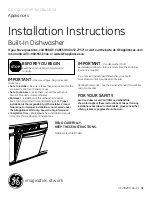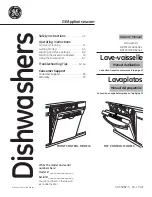
To do these when the machine is not level:
• Using the spanner turn locknut in a clockwise direction. Then
turn locknuts together with adjust feet to unscrew.
• Use a spirit level to check the machine is standing level.
• Hold adjust feet securely with a pipe wrench. Turn locknut
again using the spanner until it sits firmly up against the
housing.
Note:
Vibration and noise may occur if the locknuts do
not sit firmly up against the houses.
Drain hose connection
1. Direct into a sink
If the outlet spigot has not been used before, remove any blank-
ing plug that may be in place.
Push the drain hose onto the spigot and secure with a clip if re-
quired, ensure a loop is formed in the drain hose to prevent waste
from the sink entering the washing machine.
If required, the drain hose can be extended to a length of 4 m.
Loop
2. Connected securely to a standpipe.
Firstly form a hook in the end of the drain hose using the “U”
piece” supplied.
Place the drain hose into your standpipe, which should have an
internal diameter of approximately 38mm thus ensuring there is
an air break between the drain hose and standpipe.
When discharging into a standpipe ensure that the top of the
standpipe is no more than 90cm and no less than 60cm above
floor level.
“U” piece
supplied
38cm
60cm
90cm
Water inlet connection
Connect the inlet hose supplied with the machine to a tap with a
3/4” thread.
Do not use previously employed hoses.
Installation should comply with local water authority and build-
ing regulations’ requirements.
53
52
GB
GB













































